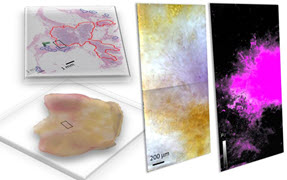Mapping the accelerating expansion of the universe
In the past decade our understanding of the universe has improved considerably. We now have a detailed picture of its general composition and are getting to grips with evolutionary scenarios. Overall, modern cosmological observations lead to the conclusion that we live in a nearly ‘flat’ universe where ordinary matter only represents approximately 5% of the total energy–matter content, ‘cold dark matter’ constitutes ~20%, and the remaining ~75% of unknown makeup is referred to as ‘dark energy.’ The latter causes the accelerated expansion of the universe, and understanding its nature is one of the most fundamental problems in contemporary physics and cosmology.
From an observational point of view we can investigate the properties of dark energy by studying how the universe expands and how the observed large-scale structures form and evolve. Supernovae, the cosmic-microwave-background radiation, the distribution of both individual galaxies and clusters of galaxies, and deformations of the light emitted by distant stellar systems due to ‘gravitational lensing’ by massive foreground objects provide the best observational probes. In particular, the observation of a characteristic length scale in the distribution of galaxies in the early universe is one of the most promising diagnostic tools in this field because of its robustness to small changes due to systematic biases.1,2

The early universe is thought to have been fairly homogeneous, with tiny matter fluctuations that subsequently grew to form galaxies. When photons and baryons fell into these density fluctuations, pressure produced acoustic waves. As the universe continued to expand, photons and baryons decoupled but the scale of these baryon-acoustic oscillations (BAOs) remained imprinted on the distribution of the next generations of galaxies. This scale provides a standard ruler which can be used to measure the expansion of the universe and may thus lead to insights into the basic characteristics of the mysterious dark energy.3 Since the BAO signal in the distribution of galaxies is rather weak, large numbers of galaxies are needed to obtain a robust measurement. The BAO scale was recently measured in spectroscopic4, 5 and photometric6 galaxy surveys. This has triggered a significant effort to develop new astronomical instrumentation aimed at obtaining more detailed BAO measurements.
To improve upon current BAO results, significant volumes of space need to be sampled, requiring deep large-area surveys. Accurate galaxy positions are needed to recover the full 3D matter distribution and thus benefit from the full potential of the BAO signature. The natural choice is to embark on spectroscopic surveys, but these require large, complex, and expensive instrumentation. The ‘Physics of the Accelerating Universe’ (PAU) collaboration proposes a novel approach using a narrow-band photometric survey employing multiple filters to determine galaxy distances on the basis of photometric-redshift techniques. In a sense, this setup is equivalent to a low-resolution spectroscopic survey.
The scientific requirements for the novel PAU wide-field camera design are driven by both the accuracy to which we want to measure the BAO scale and the volume and number of galaxies we need to sample. Extensive simulations show that a system consisting of 40–45 constant-width, contiguous, and nonoverlapping narrow-band filters covering the spectral regime from approximately 4200 to 8500Å promises good performance and will deliver the requisite photometric-redshift precision.7 Figure 1 shows a possible implementation of such a system.
The PAU camera is currently in its early design phase. It will most probably be mounted on a purpose-built 2.5m-class (diameter) telescope built by the Aragón government at the Javalambre Observatory in Spain. The camera, which we expect to build on a timescale of 3–4 years, will be similar in dimensions and capabilities to the Dark Energy Camera8 and the Sloan Digital Sky Survey camera.9 It will have a focal plane of approximately six square degrees with a plate scale of ~0.4 arcseconds pixel−1and physical dimensions of ~45cm in diameter, populated by about 60 red-sensitive CCDs, each consisting of 2k × 4k pixels. The camera will operate in drift-scan mode. The PAU survey will cover 8000 square degrees (about one-fifth of the sky) and determine the distance to approximately 15 million luminous red galaxies using photometric-redshift techniques, up to a redshift of z~1. Light observed to originate from this distance was emitted when the universe was approximately half of its present age.
This work was supported in part by the Spanish Ministerio de Educacíon y Ciencia (MEC) through the Consolider Ingenio-2010 program under project CSD2007-00060, 'Physics of the Accelerating Universe.' We also acknowledge support from MEC project AYA2006-06341, with EC-FEDER funding, and from research project 2005SGR00728 supported by the Generalitat de Catalunya.
Francisco Castander is project leader of the PAU-camera project.



